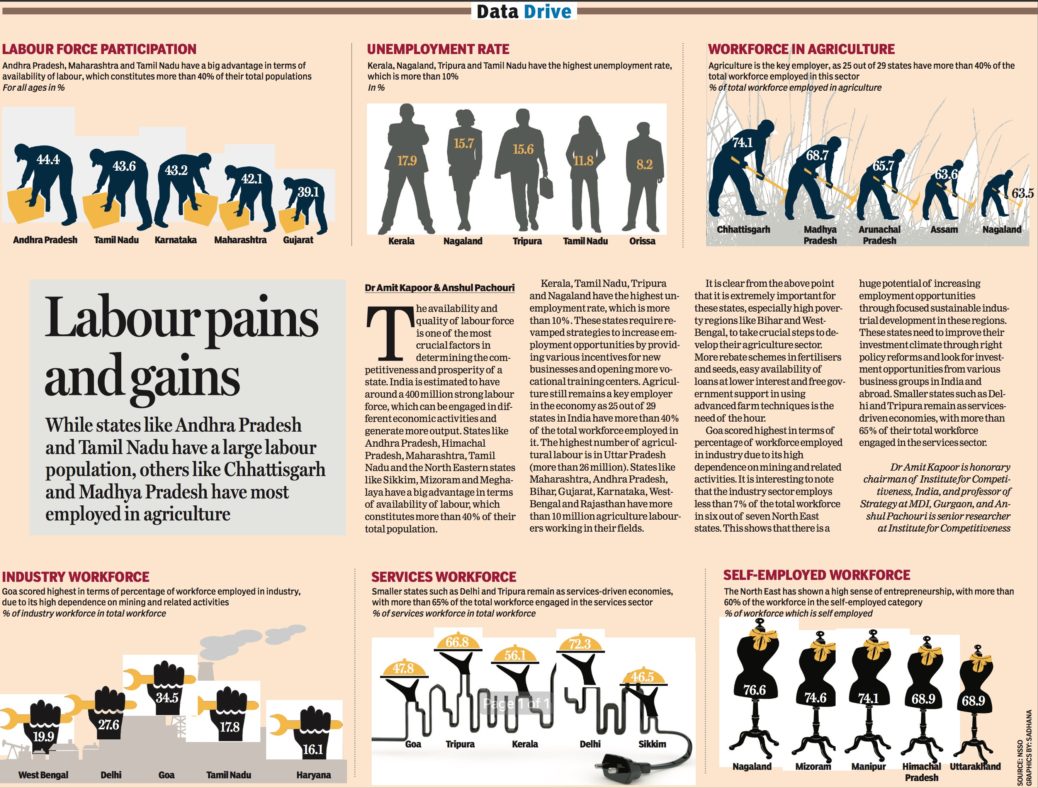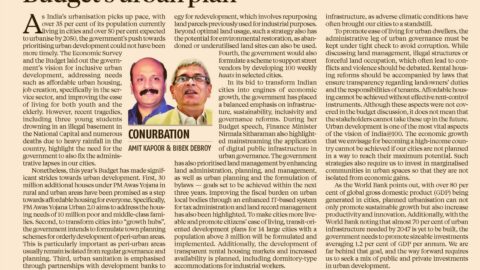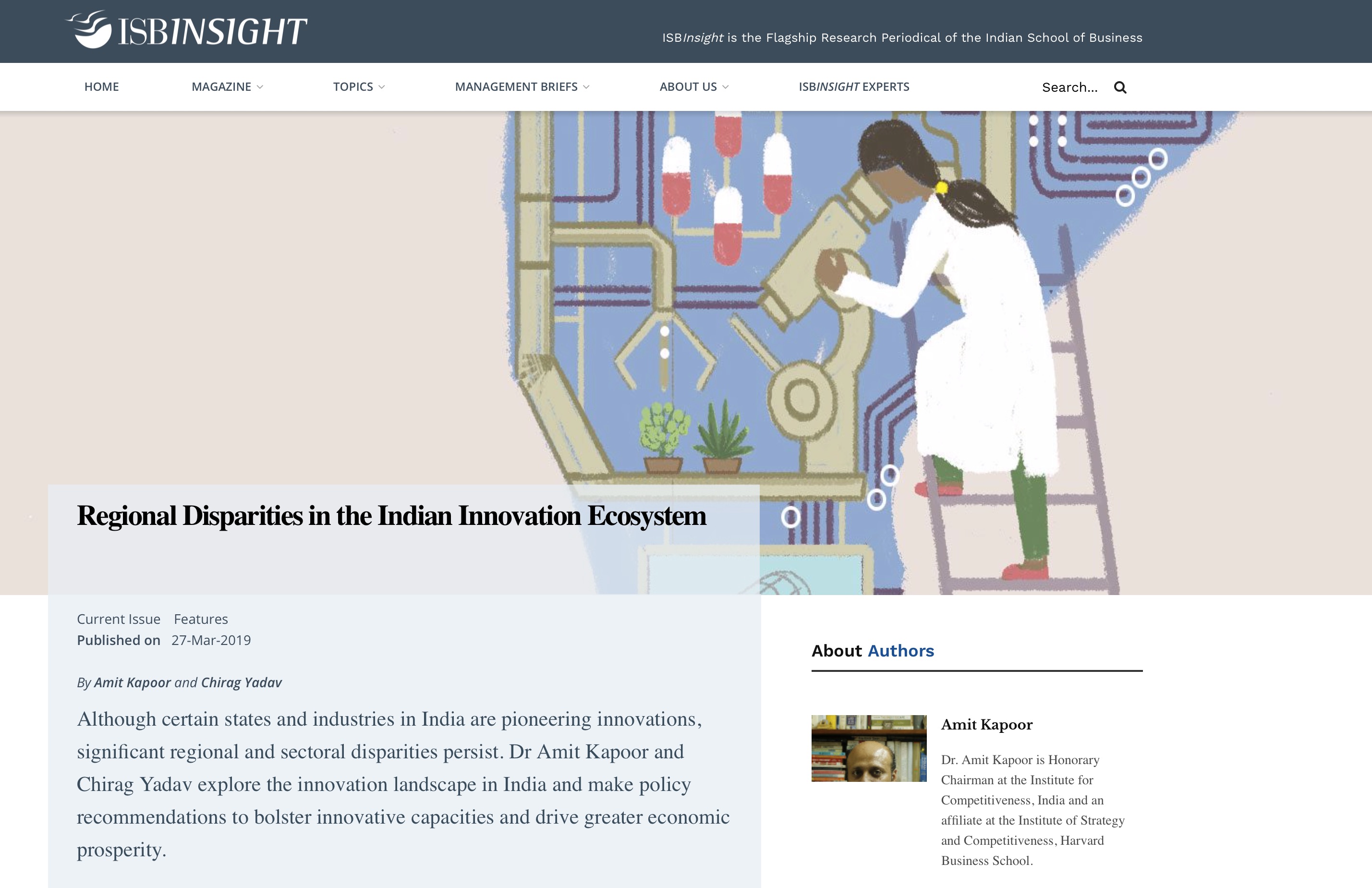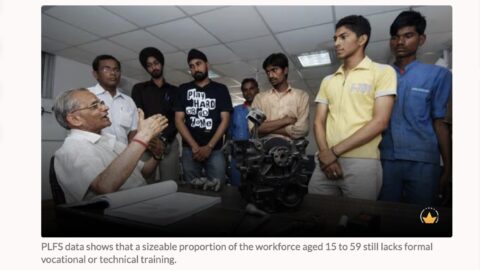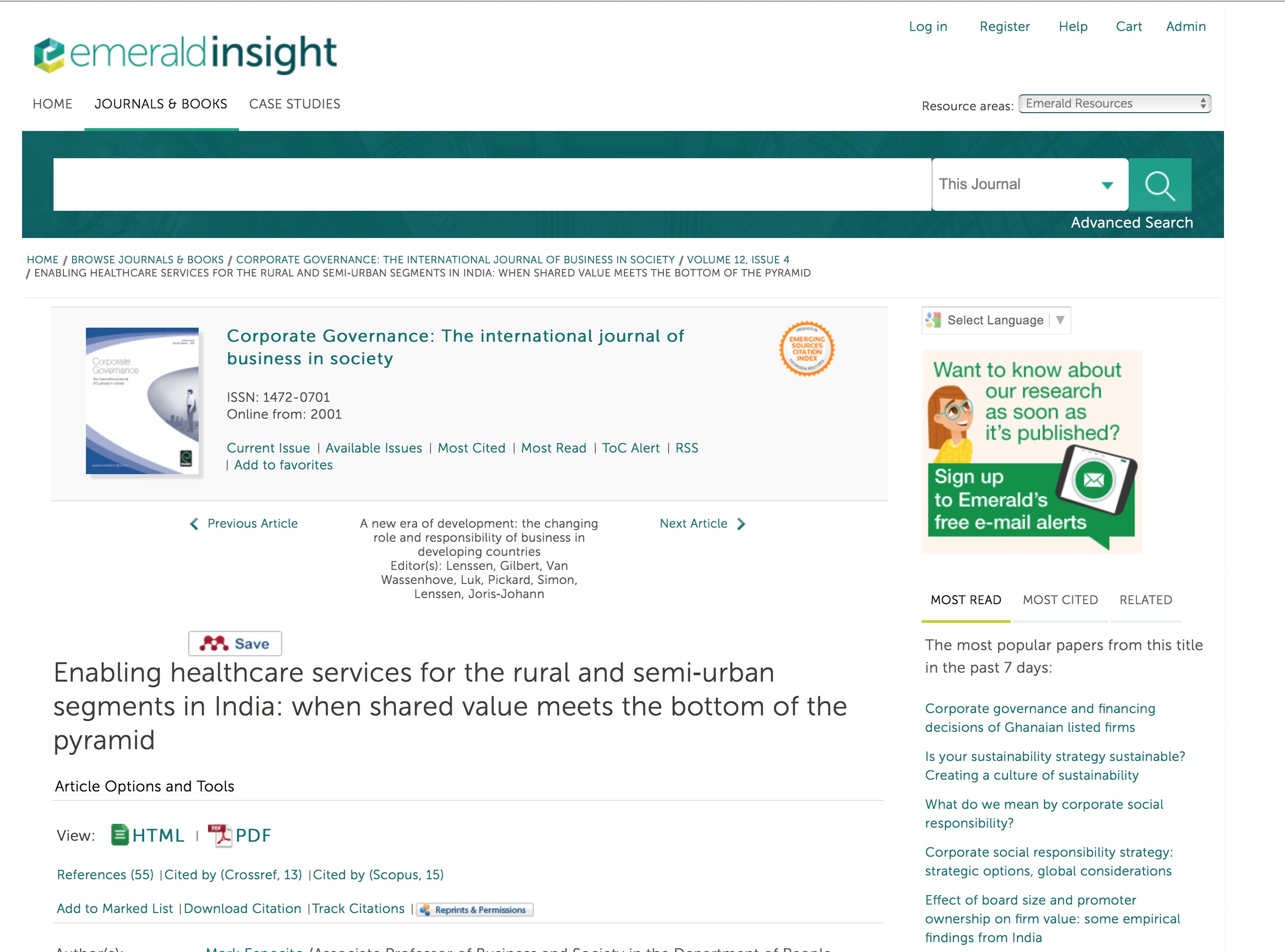The availability and quality of labour force is one of the most crucial factors in determining the competitiveness and prosperity of a state. India is estimated to have around a 400 million strong labour force, which can be engaged in different economic activities and generate more output. States like Andhra Pradesh, Himachal Pradesh, Maharashtra, Tamil Nadu and the North Eastern states like Sikkim, Mizoram and Meghalaya have a big advantage in terms of availability of labour, which constitutes more than 40% of their total population.
Kerala, Tamil Nadu, Tripura and Nagaland have the highest unemployment rate, which is more than 10%. These states require revamped strategies to increase employment opportunities by providing various incentives for new businesses and opening more vocational training centers. Agriculture still remains a key employer in the economy as 25 out of 29 states in India have more than 40% of the total workforce employed in it. The highest number of agricultural labour is in Uttar Pradesh (more than 26 million). States like Maharashtra, Andhra Pradesh, Bihar, Gujarat, Karnataka, West-Bengal and Rajasthan have more than 10 million agriculture labourers working in their fields.
It is clear from the above point that it is extremely important for these states, especially high poverty regions like Bihar and West-Bengal, to take crucial steps to develop their agriculture sector. More rebate schemes in fertilisers and seeds, easy availability of loans at lower interest and free government support in using advanced farm techniques is the need of the hour.
Goa scored highest in terms of percentage of workforce employed in industry due to its high dependence on mining and related activities. It is interesting to note that the industry sector employs less than 7% of the total workforce in six out of seven North East states. This shows that there is a huge potential of increasing employment opportunities through focused sustainable industrial development in these regions. These states need to improve their investment climate through right policy reforms and look for investment opportunities from various business groups in India and abroad. Smaller states such as Delhi and Tripura remain as services-driven economies, with more than 65% of their total workforce engaged in the services sector.
The article was published with The Financial Express in the issue dated March 31, 2012.

